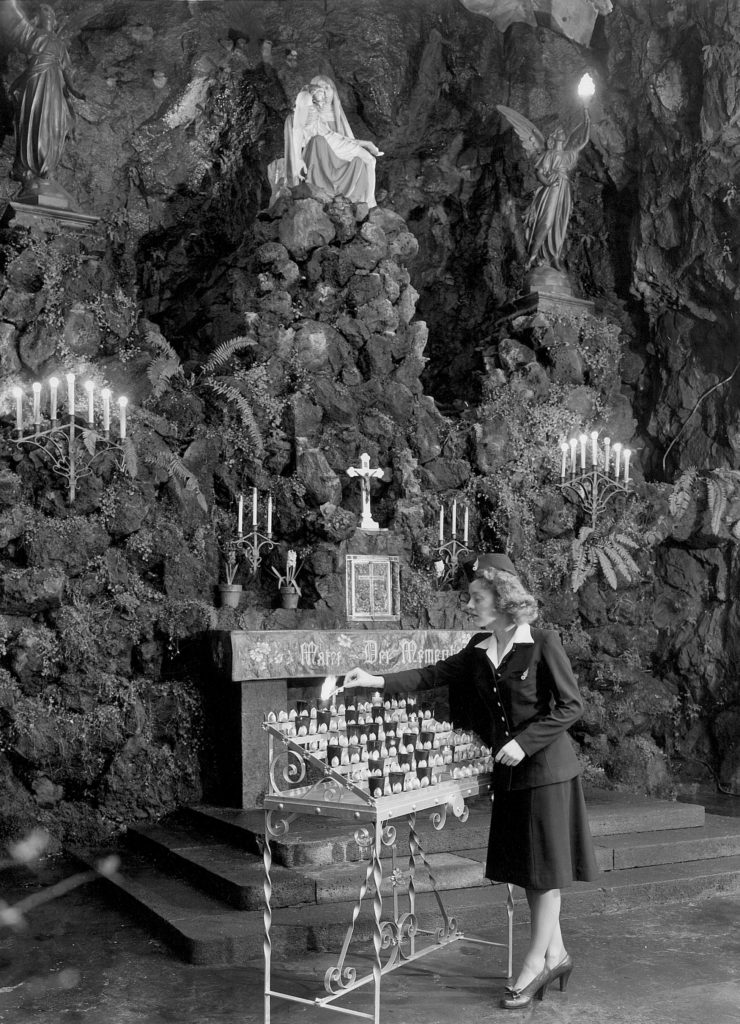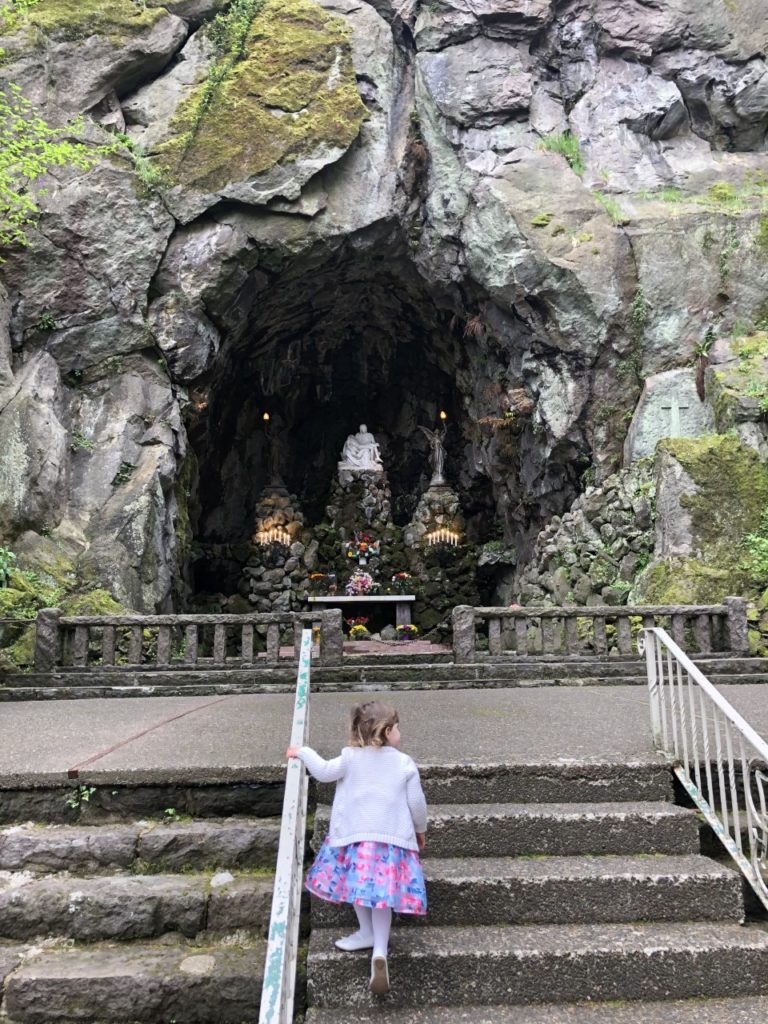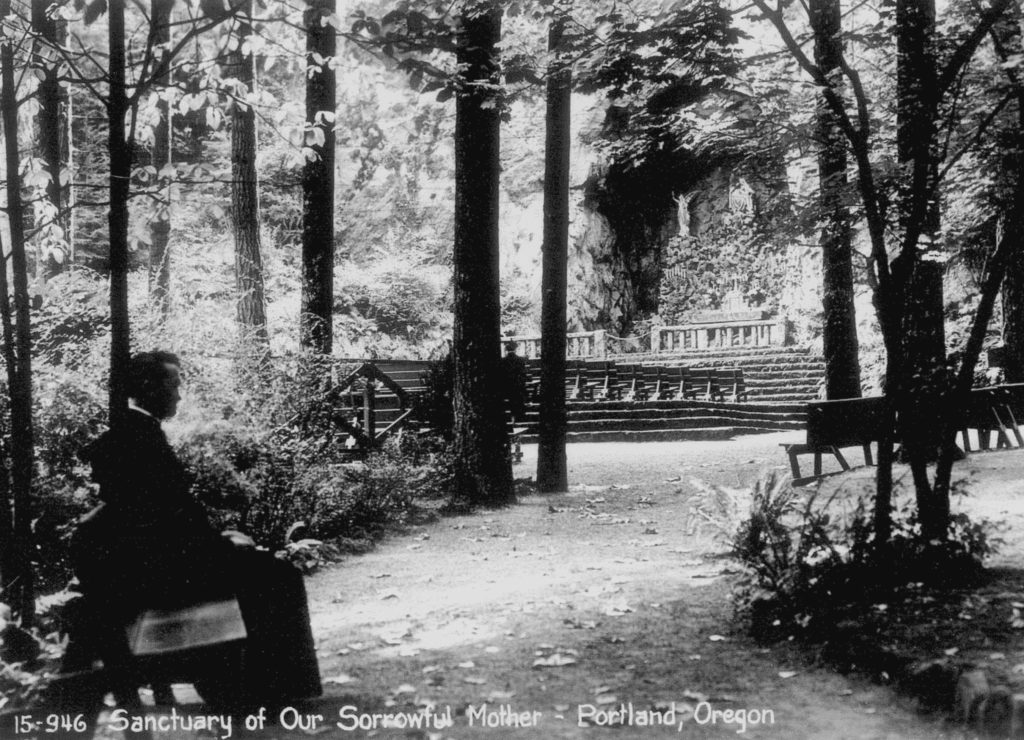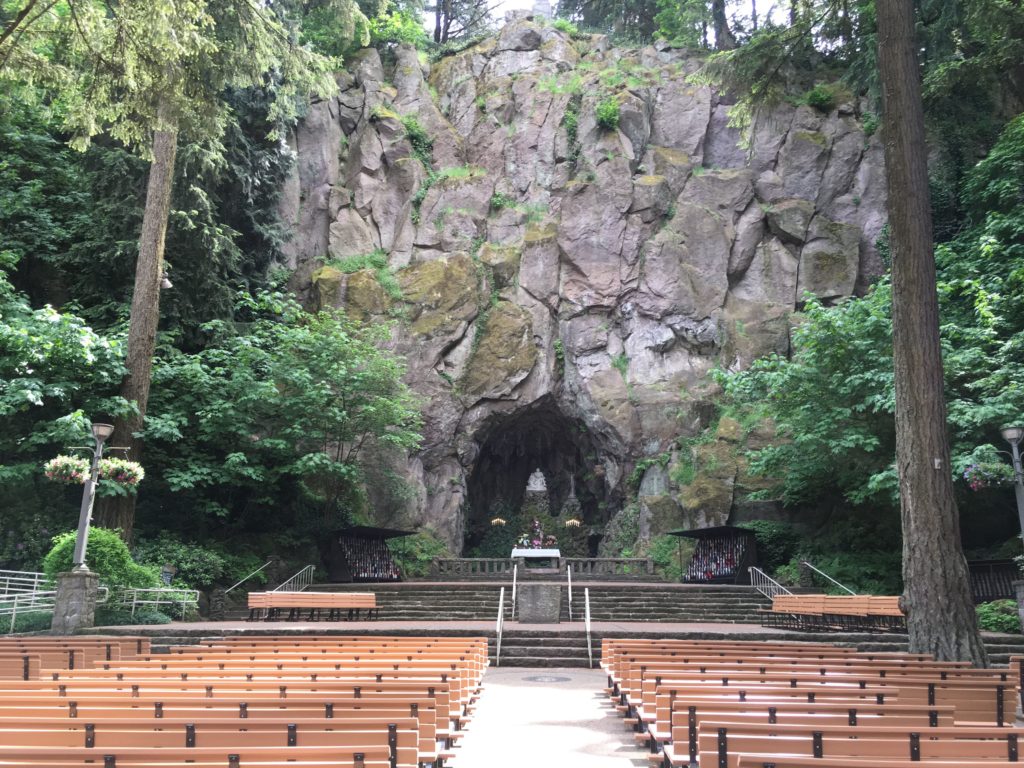
Our Lady’s Grotto
We are the National Sanctuary of Our Sorrowful Mother, but we are commonly known as The Grotto, referring to Our Lady’s Grotto.
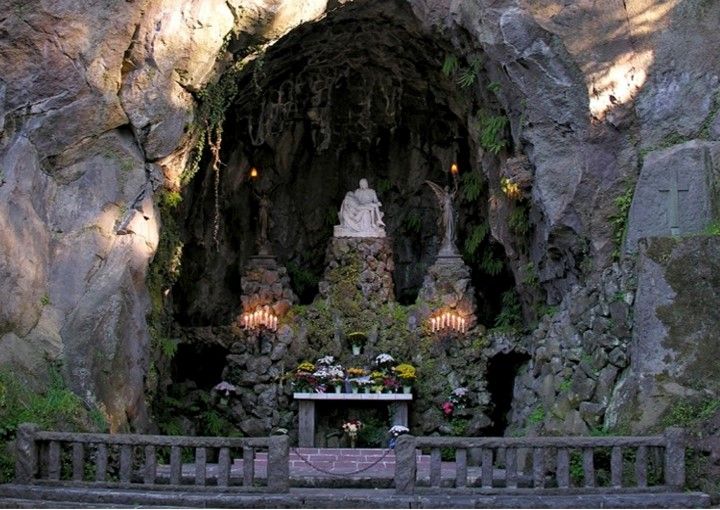
The story of our beautiful shrine begins at the end of the 19th century, with a young boy who learned that his mother lay near death after giving birth to a daughter. In tears, the boy ran to the little parish church in Kitchener, Ontario, Canada. He prayed for his mother’s life, promising that if she were spared he would one day undertake a great work for the Church. Both his mother and baby sister survived.
The future Father Ambrose Mayer never forgot his promise. As a young man Ambrose joined the Servite Order and in 1918 was sent to minister as the first Servite pastor in Oregon. He carried with him the desire to fulfill his childhood promise, often disclosing to his associates his dream of finding a site on which to build a suitable tribute to Mary, the mother of Jesus.
Fr. Mayer came across some acreage in 1923 which was owned by the Union Pacific Railroad Company. The property was a rugged, untamed wilderness that was once a quarry used to obtain rock for rail beds, and was currently scheduled for sale as residential property. He saw this as a natural cathedral which, once cleaned up, was perfect for the realization of his dream.
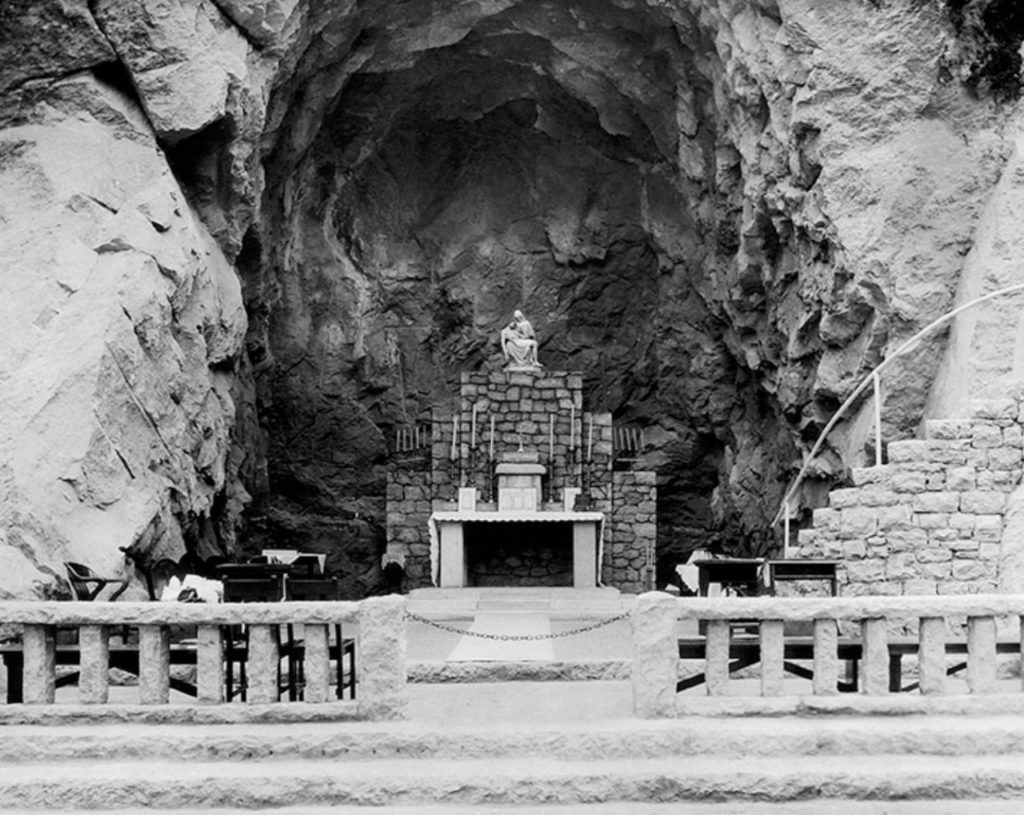
In September of 1923, the work began. A cave was carved out of the 110-foot basalt cliffside, and a stone altar built, above which was placed a depiction of Mary holding the body of her son after his crucifixion. A replica of Michelangelo’s Pietà was added several years later.
The Grotto cave is approximately 30 feet wide, 30 feet deep adn 50 feet high. It was blasted and carved out of the face of the cliff. The orginal altar, communion rail, pedestals, pulpit and several sets of steps leading up to it are all built of native rock. Additional volcanic rock around the grounds came from Battle Ground, Wash., and the new altar rock came from Smithrock Quarry in Camas, Wash
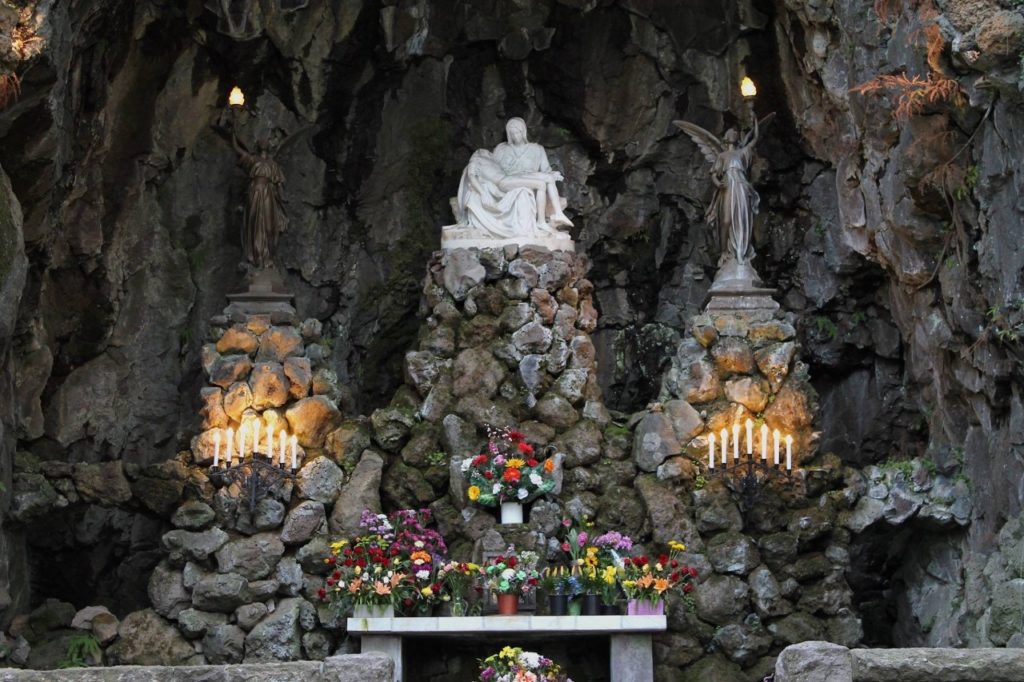
Above the altar, flanked by two bronze angels carrying lighted torches, Fr. Mayer placed the replica of Michelangelo’s Pieta in the cave in 1946. This statue is made of Carrera marble.

A Prayer to Our Lady, Health of the Sick
Virgin, most holy, Mother of the Word made flesh, Mother of Jesus my Lord, Treasurer of graces, and Refuge of sinners…I embrace your motherly affection with a lively faith,and I humbly ask of you the grace ever to do God’s will.
Into your most holy hands I commit the safe-keeping of my heart, asking you for health of soul and body, especially in this time of the coronavirus; in the certain hope that you, my most loving Mother, will hear my prayer.
I entrust my soul and body to your arms of mercy and compassion,this day, every day of my life,and at the hour of my death.
I entrust to you, Blessed Mother of God, and my Mother, all my hopes, my consolations, all my trials and miseries, my whole life;that all my thoughts, my words, and my deedsmay constantly reflect the goodness and Love of your Divine Son, Jesus Christ, Our Lord.
Amen.
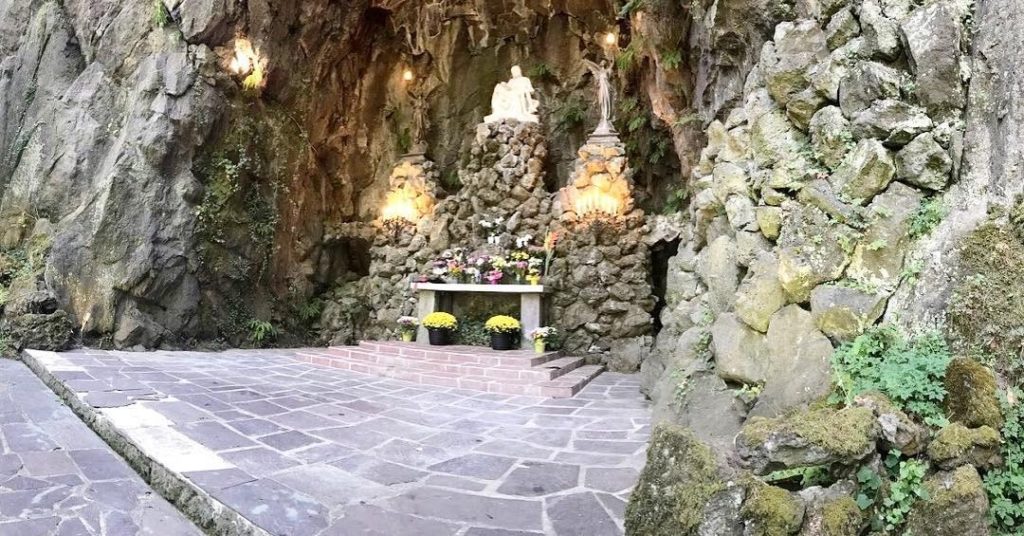
Today at The Grotto
Mass is celebrated outdoors in front of The Grotto on Sundays in the warmer months.
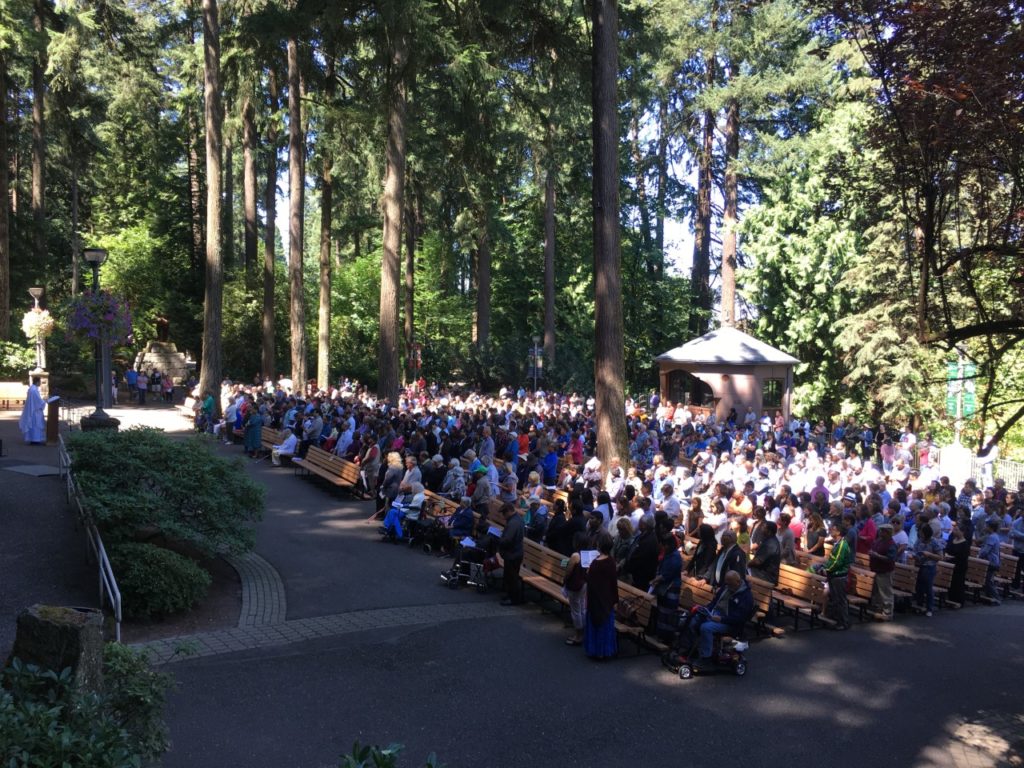
The cliff face and Grotto provide a stunning backdrop throughout the year for weddings, concerts and cultural celebrations.
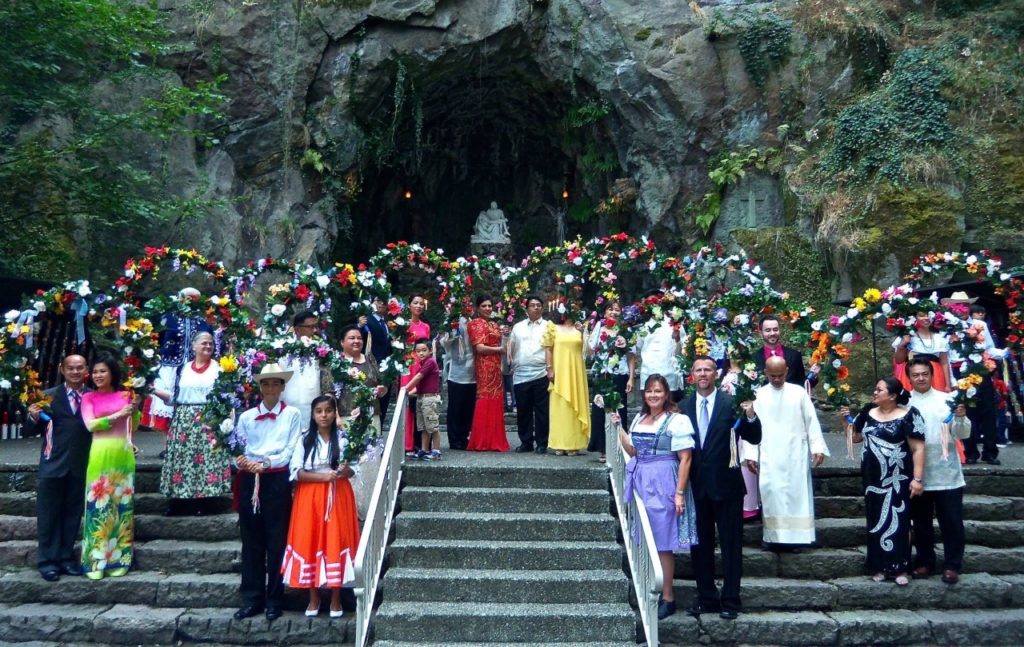
Before and After
Enjoy these photos taken from the same angle. Can you spot the differences?
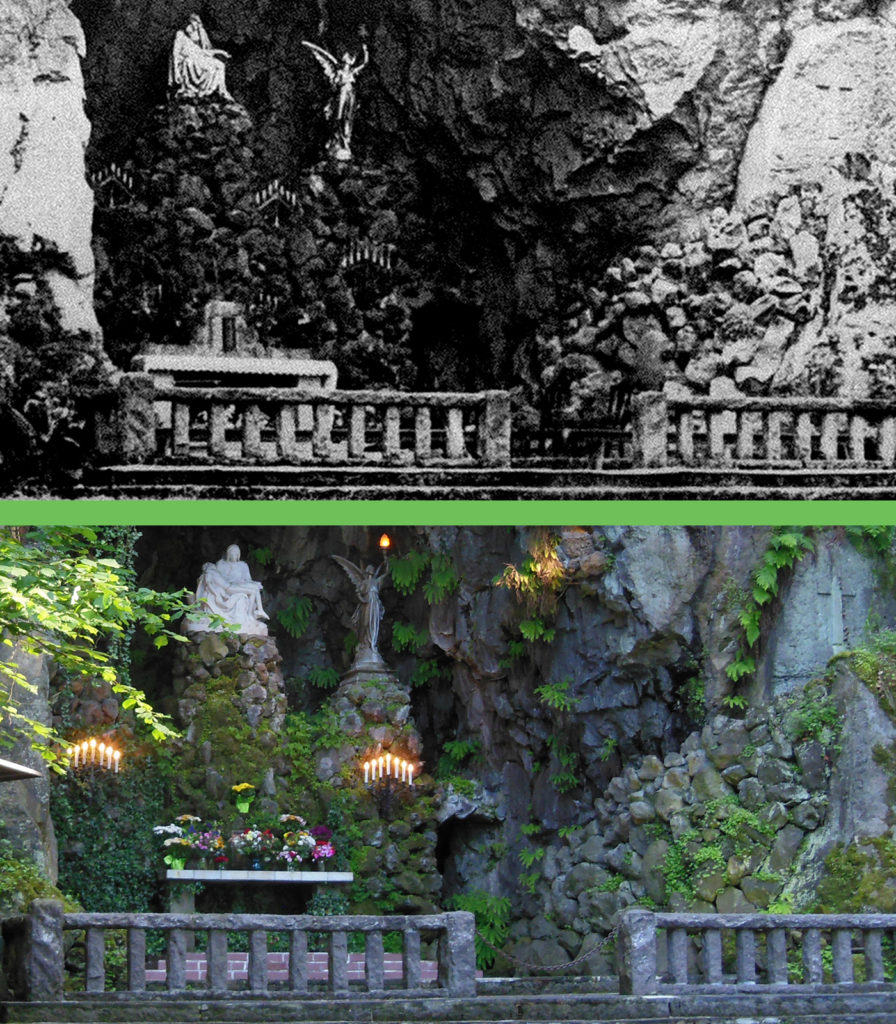
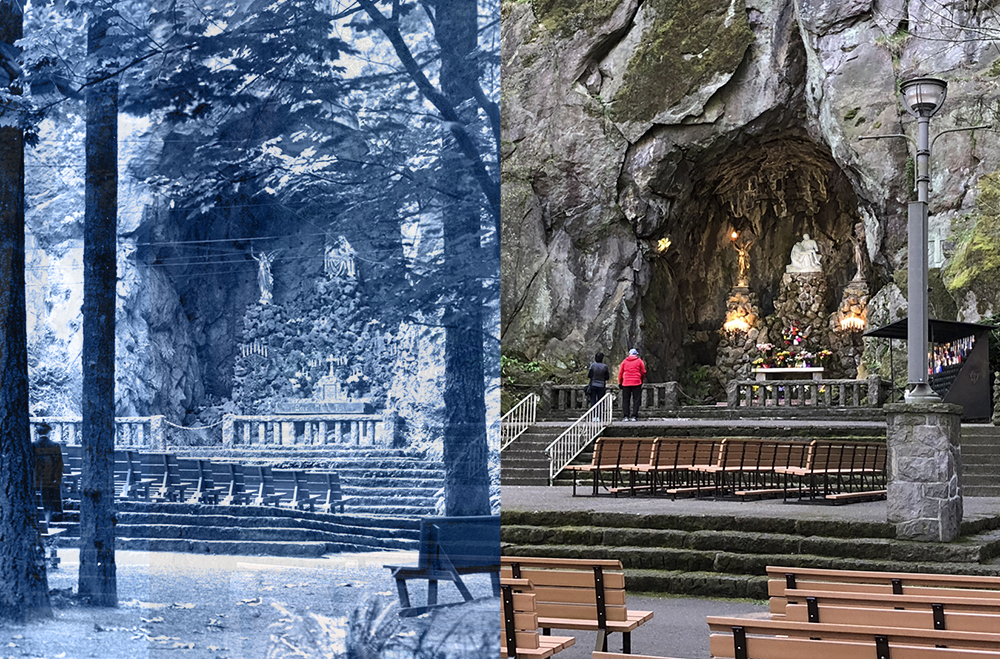
A photographic backdrop
Our Lady’s Grotto is the most photographed place on The Grotto property. It provides a wonderful backdrop for family photos.
Here are a few of our favorite photos from through the years.
